India Indian music music vocalists: genius Jaipur Gharana khyal
by Warren
9 comments
Meta
SiteMeter
Brighter Planet
Singing Is Nothing But Joy: An Appreciation of Mallikarjun Mansur
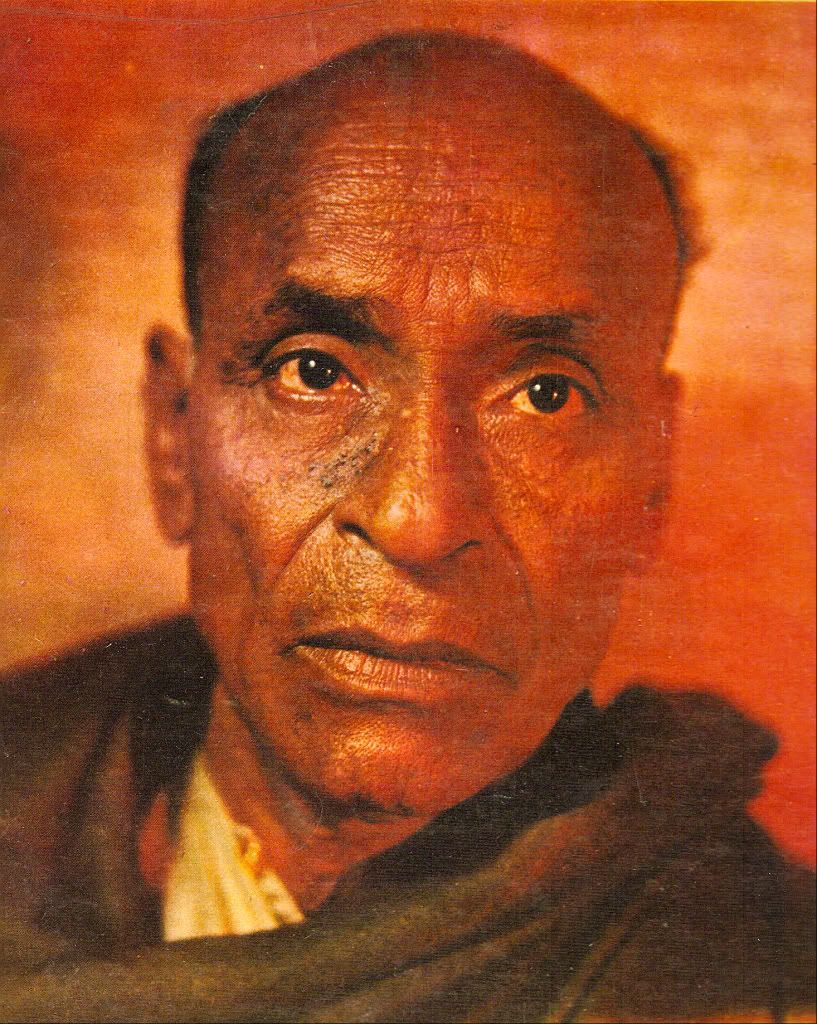
The first time I heard the music of Pandit Mallikarjun Mansur was in 1978, very early in my study of Hindustani music. I’d taken a survey course on Indian music at the Harvard Extension, and the professor gave me an assortment of vocal music that included Mansur’s rendition of a beautiful rainy-season raga, Gaud Malhar.
It was strikingly different from the other music on the tape. More than any of the other singers represented, this vocalist really seemed to be enjoying himself. There was a rhythmic playfulness that spoke to my jazz-loving self, integrated with the serene aesthetic flow that characterizes Hindustani music. His voice was a high, slightly raspy tenor; his range was relatively narrow; his breath control preternatural.
I asked other people about Mansur. This was the late 1970s, and most of the people I knew in the Indian music community had never heard of him; as it turns out, he had not been performing widely for decades and had only recently returned to the notice of the concertgoing public in India. Over the next few years I gradually acquired tape recordings of his LP records, whetting my appetite for more of this remarkable singer’s remarkable music. Nobody I knew on the Indian tape-trading network had any concert recordings, and the Internets hadn’t been invented yet.
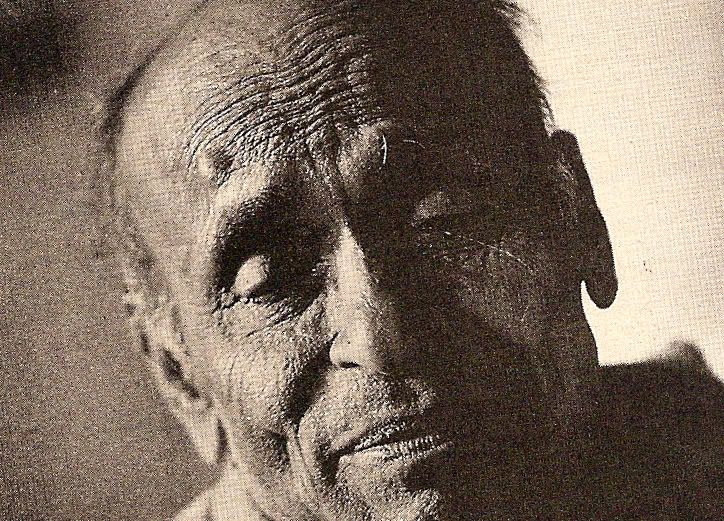
India Indian music music: agra gharana genius khyal
by Warren
leave a comment
Meta
SiteMeter
Brighter Planet
Dinkar Kaikini
Performing Raga Komal Re Asavari, with Sheikh Dawood Khan on tabla:
I enjoy his singing so much. The raspy and expressive voice always carries me along on the surging flow of imagination.
India Indian music music: genius khyal Krishnarao Shankar Pandit
by Warren
leave a comment
Meta
SiteMeter
Brighter Planet
Amazing. Just Amazing.
More Krishnarao Shankar Pandit.
Here is his magnificent Devgandhari:
And another morning raga, Deshkar. His audacity of imagination is fully evident here, for example in his excursions into the lower register — Deshkar is usually considered to dwell exclusively in the upper range, so it’s quite a feat to sing in the basement without making it turn into Bhoopali.
And finally a bhajan in Raga Pilu, the oft-heard “Raghubir tum ko mori laaj.”
More to come.
India Indian music music: genius Gwalior gharana improvisation khyal Krishnarao Shankar Pandit
by Warren
1 comment
Meta
SiteMeter
Brighter Planet
Krishnarao Shankar Pandit: Raga Darbari Kanada
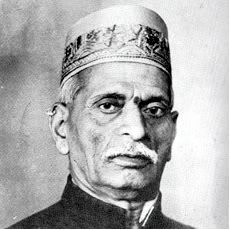
One of the greatest recorded performances of Hindustani music, this 30-minute gem comes from 1957, when Krishnarao Shankar Pandit was in his prime. The force and power of his improvisations are astonishing; there is nobody else in Hindustani tradition who can imagine some of the things he comes up with, let alone execute them with such verve and clarity.
Anokhey Lal, who was known for his brilliant and supportive theka, is accompanying on tabla. The violinist is not credited. Any thoughts?
Enjoy.
India Indian music music: genius khyal Ramakrishnabua Vaze
by Warren
2 comments
Meta
SiteMeter
Brighter Planet
Ramakrishnabua Vaze: Raga Mian Ki Malhar
As promised long ago, here is the full-length version of Vazebua’s Mian ki Malhar. The two khyals are both classics; the vilambit is Karim naam tero; the drut Bolare papihara.
The accompanists are both superb. Sarangi is provided by Ustad Bundu Khan, playing his special small humaniform sarangi; tabla is by a young Ustad Alla Rakha. Vazebua was in his eighties, so there are moments when his intonation loses focus or his breath control gives out before his idea has been resolved, but these are minor quibbles…the performance as a whole is riveting, the last recorded testament of one of the form’s greatest masters.
All India Radio Recording: Raga Mian Ki Malhar
Pandit Ramakrishna Vaze
Rajeev Vaze, Bua’s great-grandson, commented on one of the earlier posts:
I would like to elaborate on couple of things in line with my comment that ‘Bua was much ahead of his times’. He was one of the first musicians and possibly the only one, who published books on many compositions with notation, which he acquired from his Gurus by way of extreme hard work. The idea behind this was to throw open his stores to every follower of music. There are many books written by estiblished musicians thereafter but all those are without notations and the students can not gain anything except the literature.
You will also realise that not many stalwarts were mentally prepared to cut records under the pretext that their music will become common and thereby loose its value. Realising the importance of documentation and it’s usefulness for generations to come, Buwasaheb not only mastered the art of modulating his voice so as to suit the recording machines available in those days but tried to present different facets such as Thumari, Tarana, Bhajan along with the khyal on the number of records being cut.Unfortunately, all his deciples died at a very young age and most of them such as Master Deenanath, Keshaorao Bhosale, Bapusaheb Pendharkar belonged to Theatre. His work is not known to present generation. I’ve seen many people sing / like compositions from dramas such as ‘Sanyasta Khadga’, ‘Shah Shivaji’ etc with a wrong presumption that these are composed by Master Deenananth. This is incorrect as all these and many more are composed by Buwasaheb. There are many songs composed by Pt Hridaynath which are based on the original compositions of Vazebua and the listeners are still enjoying.
India Indian music music: genius Jaipur Gharana Kesarbai Kerkar khyal
by Warren
10 comments
Meta
SiteMeter
Brighter Planet
Kesarbai Kerkar’s Music Is, In Fact, Out Of This World.
One of the greatest voices of the twentieth century belonged to Kesarbai Kerkar, the legendary singer of Jaipur-Atrauli tradition, who bestrode the narrow concert platforms of India like a colossus until a few years before her death in 1977. To listen to Kesarbai is to experience intellectual, emotional and artistic depth in a way that can hardly be matched anywhere else.
Nat Kamod
Education Indian music music: intonation khyal learning practice riyaaz singing
by Warren
leave a comment
Meta
SiteMeter
Brighter Planet
Practice Tips and Techniques, No. 1
About ten years ago my student Brian O’Neill and I had a long discussion about practice techniques. He transcribed it and sent it along to me, and it languished on my hard drive. Recently, I remembered the material and dug it out. It needs editing, so it’s going to take a while to get it all tidy, but there’s some worthwhile stuff in that document. The first part of the conversation was about practicing the drone — the most basic type of self-tuning a singer can do.
WS: When I started out I did not have any particular deep sense of discipline in practice. Eventually I began by starting every day with a drone session. I would just sing the tonic, the Sa. And I would focus on that, and I would…
BTO: Tune up?
WS: Yeah. You try & get your temporomandibular joint a little bit loose; you do a little bit of overtoning; some tongue stretches; try and make sure the soft palate is down and you’re getting sinus resonance. What I tell my students is to begin with a little session (it might be 10 minutes) of Sa, every morning. And when you do that, you examine different variations.
For example, subtle intonational shifts. Get on Sa and move the note the smallest possible amount flat, then return it to the center, then move it sharp and return it. What you’re really doing is, you’re decreasing the intonational standard deviation of the pitch.
So that’s one approach to the Sa.
Another approach is breath control. You get a watch with a sweep second hand, sing Sa [one breath’s worth], and time yourself. “Hmmm, that was 11 seconds. OK, I’m going to go for 12.” And then you ask yourself, “Where does most of the air go out? Oh, most of the air goes out in the very first half a second. OK, let me try and regulate that. Good!, I got 5 more seconds on that.” So those are all good ways of occupying yourself on the drone. So 10 minutes turns out to be nowhere near enough time, and you just pick one or another of those exercises to do with the tonic.
There’s a lot more to come, including very specific methods for organizing your practice to get the most effective study in the time you have available. Stay tuned!
Finally, a word on a related subject.
If you’re studying or teaching music, you’re engaged in the long, slow, work of taking parts of our past and preparing them to travel into the future.
Therefore, you owe it to yourself and to the music you cherish — to educate yourself about climate change.
No stable climate – no music. It’s as simple as that.
MUSIC IS A CLIMATE ISSUE
Indian music music photoblogging: Bhimsen Joshi Gangubai Hangal khyal Kumar Gandharva Malini Rajurkar Mallikarjun Mansur
by Warren
1 comment
Meta
SiteMeter
Brighter Planet
Khyal Photoblogging
These were taken between 1985 and 1987, at various concerts in Pune, Mumbai, Miraj and Delhi. Enjoy:
Bhimsen Joshi:
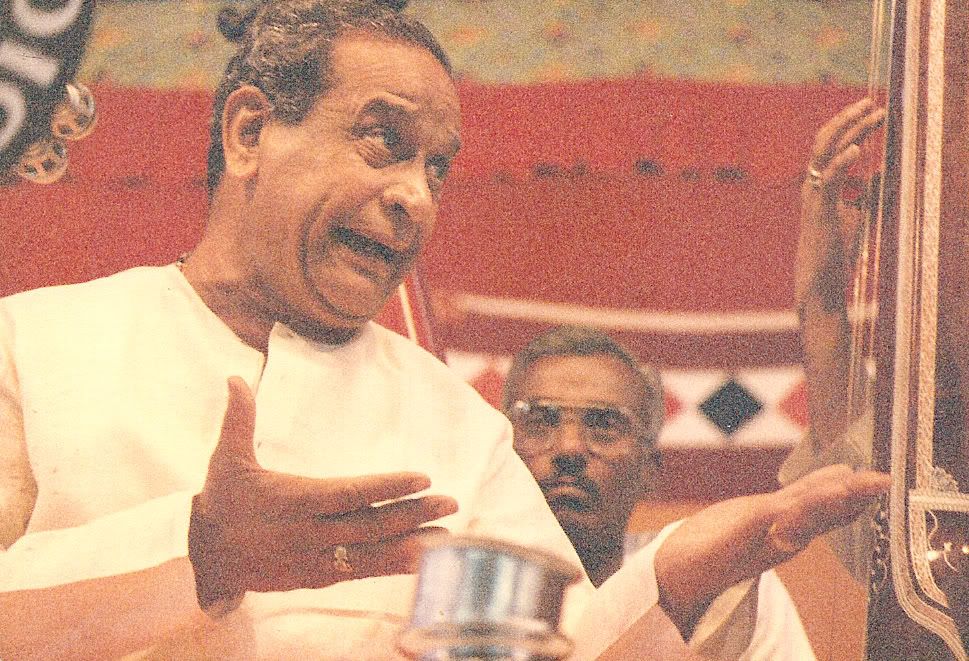
Sawai Gandharva Mahotsav, 1985. He was singing a beautiful Todi, “Changai nainawa” followed by “Langara kankariyaa jina maaro.” Nana Muley on tabla, Purushottam Wallawalkar on harmonium.
environment Indian music music October 24 Action Warren's music: Gorakh Kalyan khyal Raga
by Warren
4 comments
Meta
SiteMeter
Brighter Planet
Playing for the Planet: Warren Senders’ set
When I first got the idea for the “Playing for the Planet” concert, I knew instantly that I wanted to sing these three compositions in Raga Gorakh Kalyan. I will update later on with the complete text and meaning; tonight I just want to get this posted before I go to sleep.
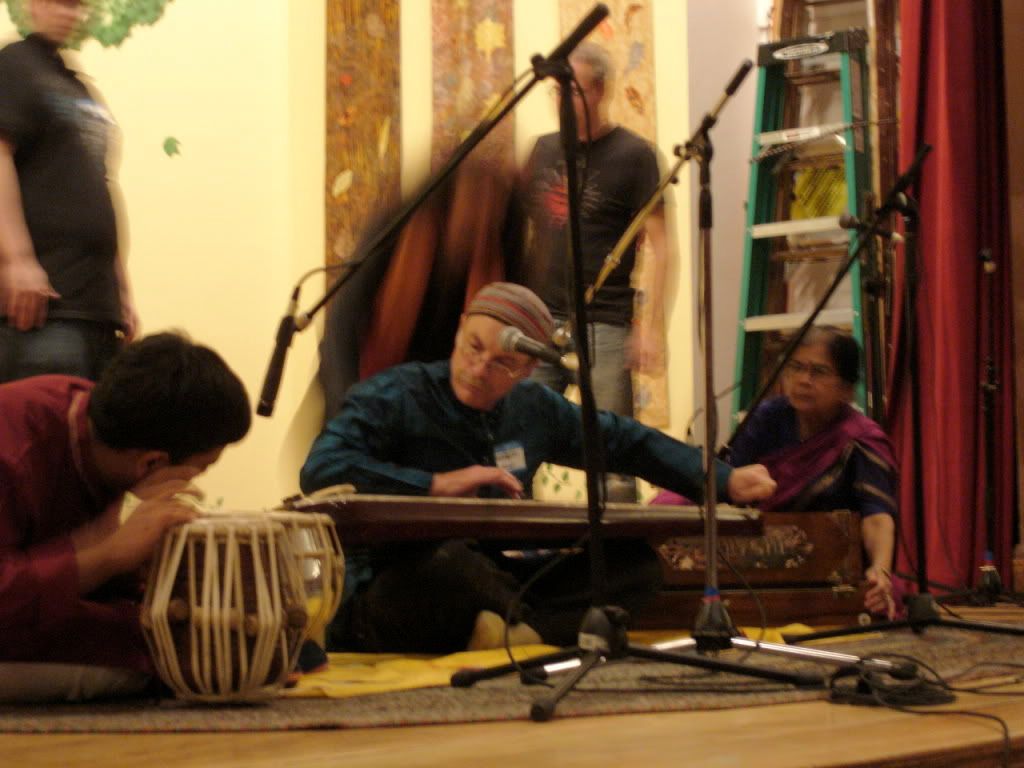
Indian music music: 78s Gwalior gharana khyal Ramakrishnabua Vaze
by Warren
5 comments
Meta
SiteMeter
Brighter Planet
A Blast from the Past: Ramakrishnabua Vaze (1871-1945)
One of the greatest voices of pre-Independence India, Pt. Ramakrishnabua Vaze was born in 1871:
…in a small village in Maharashtra…Vaze Bua lost his father soon after and was brought up by his mother. He studied for only a few years in school, his passion for music overtaking his interest in studies. With his mother’s help, he spent the next few years, moving around, taking lessons in music from several teachers. He was twelve when he was summoned home to get married and take up his duties as a householder. The newly married Vaze felt it improper to depend upon his mother for financial support and decided to take off on foot, with no particular destination and only the pursuit of music on his in mind.
Link
Note that at age twelve, he decided it was improper to depend on his mother…so he presumably left his wife (who was presumably even younger) at home and went out a-wandering.
At the time, all roads led to Gwalior, where the young man eventually became a disciple of Ustad Nissar Hussain Khan (note: this is not the Nissar Hussain Khan of Rampur-Sahaswan fame). The typical spate of privations, indignities and unswerving dedication eventually led to a level of musicianship and artistry that continues to amaze and inspire.
“His performances were always lively and intellectually stimulating. His layakari was flawless , his taans had clarity and force and he would leave his audience spellbound. He was responsible for bringing many little known ragas to light and as a composer, his specialty was bandishes in fast tempo.” Link
Here are a few of Vazebua’s wonderful short recordings, made during the heyday of 78 rpm discs in India. I’ll add more as I get around to it.
Enjoy!
